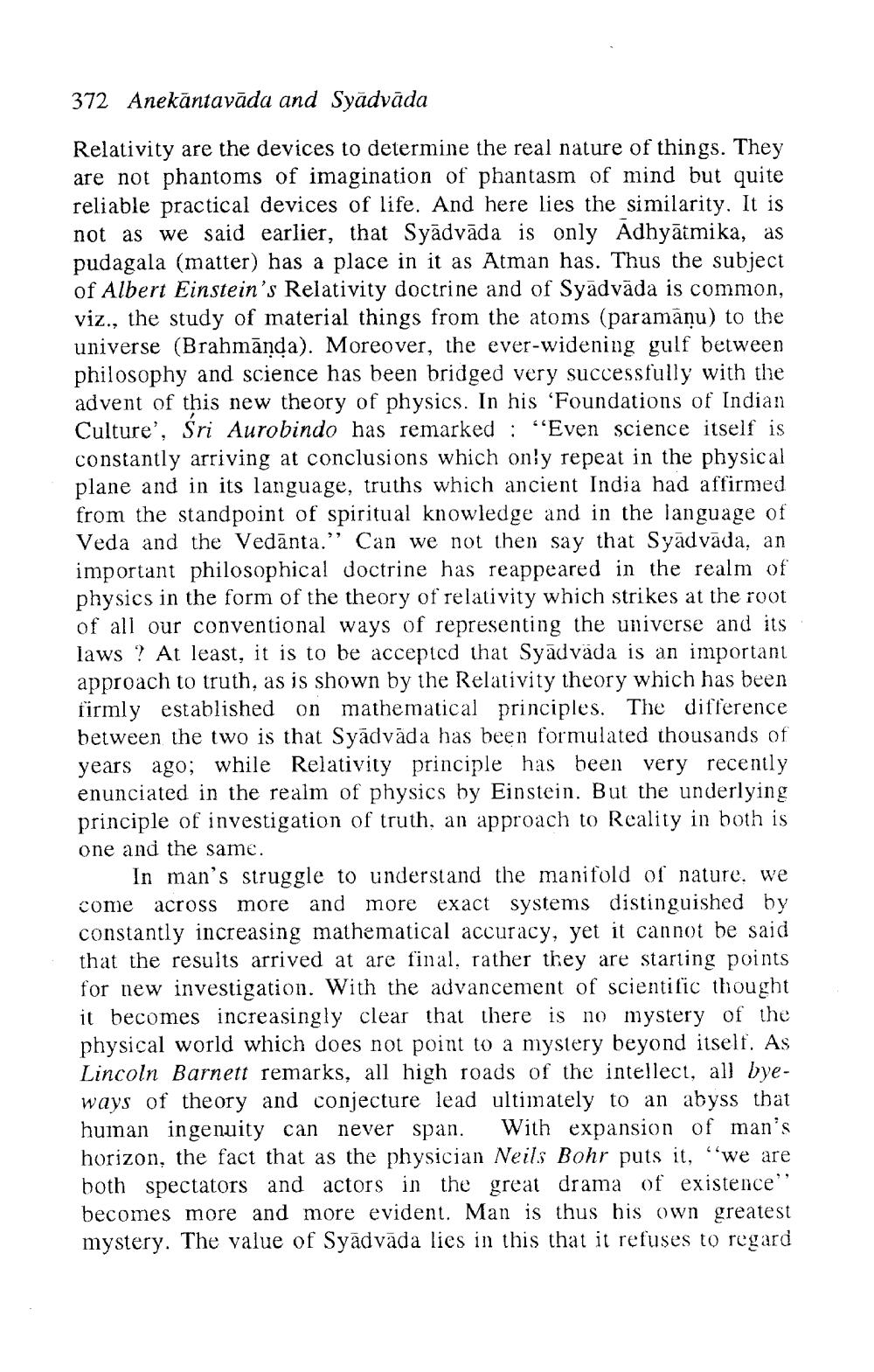________________
372 Anekantavāda and Syadvāda
Relativity are the devices to determine the real nature of things. They are not phantoms of imagination of phantasm of mind but quite reliable practical devices of life. And here lies the similarity. It is not as we said earlier, that Syadvāda is only Adhyatmika, as pudagala (matter) has a place in it as Atman has. Thus the subject of Albert Einstein's Relativity doctrine and of Syadvada is common, viz., the study of material things from the atoms (paramāņu) to the universe (Brahmanda). Moreover, the ever-widening gulf between philosophy and science has been bridged very successfully with the advent of this new theory of physics. In his 'Foundations of Indian Culture', Sri Aurobindo has remarked: "Even science itself is constantly arriving at conclusions which only repeat in the physical plane and in its language, truths which ancient India had affirmed from the standpoint of spiritual knowledge and in the language of Veda and the Vedanta." Can we not then say that Syadvada, an important philosophical doctrine has reappeared in the realm of physics in the form of the theory of relativity which strikes at the root of all our conventional ways of representing the universe and its laws? At least, it is to be accepted that Syadväda is an important approach to truth, as is shown by the Relativity theory which has been firmly established on mathematical principles. The difference between the two is that Syadvada has been formulated thousands of years ago; while Relativity principle has been very recently enunciated in the realm of physics by Einstein. But the underlying principle of investigation of truth, an approach to Reality in both is one and the same.
In man's struggle to understand the manifold of nature. we come across more and more exact systems distinguished by constantly increasing mathematical accuracy, yet it cannot be said that the results arrived at are final, rather they are starting points for new investigation. With the advancement of scientific thought it becomes increasingly clear that there is no mystery of the physical world which does not point to a mystery beyond itself. As Lincoln Barnett remarks, all high roads of the intellect, all byeways of theory and conjecture lead ultimately to an abyss that human ingenuity can never span. With expansion of man's horizon, the fact that as the physician Neils Bohr puts it, "we are both spectators and actors in the great drama of existence" becomes more and more evident. Man is thus his own greatest mystery. The value of Syadvāda lies in this that it refuses to regard




